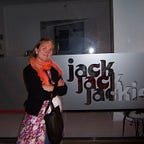From Seed to Harvest: Growing Oysters with Hama Hama in the Hood Canal
The Hood Canal — located between the Puget Sound and the Olympic Peninsula in Washington — isn’t really a canal at all. In actuality, it’s a fjord, (meaning that whereas a canal joins two larger bodies of water together, a fjord has an end) — cool, calm waters that slice through a picturesque region southeast of Seattle, filled with oysters, clams and spot prawns in the water and Roosevelt Elk, bald eagles and herons on land. And although there are quite a few farms nestled along the banks of Hood Canal, there are none quite like Hama Hama Oyster Company, a fifth generation oyster farm.
The story of Hama Hama begins in the late 1800s when a man named Daniel Miller Robbins made his way from Minneapolis to The Hood Canal, building railroads for J. J. Hill and slowly buying up property where the Hamma Hamma River and the Canal waters meet.
Perhaps unbeknownst to Daniel, as the tidal flats filled in as a result of gravel brought down from the river, the property became the perfect spot to grow oysters
However, this wasn’t discovered until the late 1950s when Daniel’s grandson Bart Robbins was working the property as a shrimper, bringing the sweet spot prawns caught in the canal to Seattle to sell at market. According to his granddaughter Lissa James Monberg, Bart noticed oysters growing wild on the beaches in front of their property and began including them in his shrimp deliveries.
“It was fortuitous that we were already an established company because when people were asking who to make checks out to, my grandfather told them [the oysters] were coming from the Hama Hama Company. At the time, oysters weren’t sold by any name, so it gave us a leg up on selling branded product, so that was cool,” says Lissa.
Now, the Hama Hama Oyster Company (formed before the spelling of the Hamma Hamma River was concrete) plants, harvests and sells two million oysters every year. Some of the oysters come from the same tidal flats Daniel Miller Robbins settled during the late 1800s, while others are harvested from leased beaches all across the South Puget Sound area. In total, there are 130 acres at work growing Hama Hama-branded bivalves.
Unlike raising land animals, oyster farming shares many terms with agrarian farming. Baby oysters, called seeds, are planted into beds, “scattered into an outgoing tide like you might throw grass seed down,” says Lissa.
Oyster seeds can be found in the wild, but Hama Hama also orders seed from a seed company. They are small enough to be mistaken for a speck of sand and are nurtured in an indoor environment until large enough to be scattered. Once scattered it can take up to two years to grow into something you would eat.
Hama Hama’s namesake oyster is scattered, while their Blue Pool variety is tumbled — meaning seeds are placed in mesh bags that float with the tide — causing the oysters to float or tumble freely in the bag. This act creates a distinct deep, smooth cup that’s easier to shuck. The flavor of Blue Pools differ from Hama Hamas in that they’re slightly more vegetal, “with a finish leaning towards the earthy sweetness of a carrot, rather than a cucumber,” says their website.
Originally Hama Hama oysters were only sold at farmers markets or to restaurants, but in the 1970s the family opened a retail shop at their farm, allowing interested customers a chance to pick through and purchase shucked and unshuked varieties alongside clams and various sundries. By 2015 they were tired of turning away people who wanted to enjoy their oysters at the farm and Hama Hama opened the Oyster Saloon. Now oyster lovers can grab a picnic table overlooking the oyster beds and fill up with freshly shucked bivalves — served raw or grilled — and wash them down with beer and wine. And if Lissa is around, ask her to pull you down to the oyster beds, show you the nursery and tell you tales of the five generations of farmers working the land and water.
